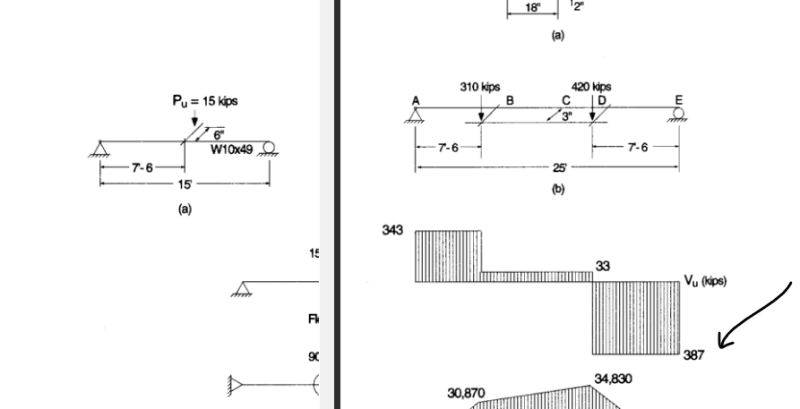alex2000junio
Student
- Dec 18, 2023
- 4
Hello guys,
I have some quick questions about the examples of Design Guide 9 that are not 100% clear to me.
- Why does V_u, in example 5.1, is divided by 2? Example 5.4 does not divide.
- In Example 5.1, both τ_bw and τ_bf uses Vu. Shouldn't it be V_y for the web one and "V_x divided by 2" for the flange one (divided because there are two flanges)? It makes sense to me since the shear applied in x is different from the one applied in y. Also, why does it uses I_x for both cases?
In my case, I have separate values for shear, I mean, I have V1, V2 and V3 (Vx, Vy and Vz). So, am I correct at the second sentence?
I have some quick questions about the examples of Design Guide 9 that are not 100% clear to me.
- Why does V_u, in example 5.1, is divided by 2? Example 5.4 does not divide.
- In Example 5.1, both τ_bw and τ_bf uses Vu. Shouldn't it be V_y for the web one and "V_x divided by 2" for the flange one (divided because there are two flanges)? It makes sense to me since the shear applied in x is different from the one applied in y. Also, why does it uses I_x for both cases?
In my case, I have separate values for shear, I mean, I have V1, V2 and V3 (Vx, Vy and Vz). So, am I correct at the second sentence?

